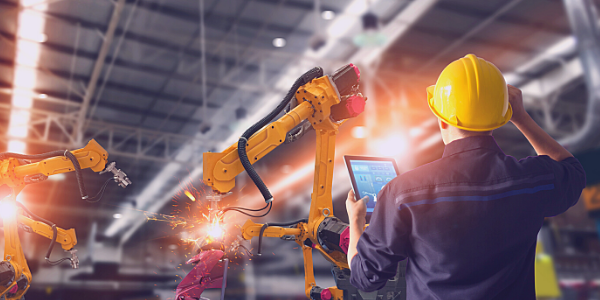No matter what any business plan looked like in January 2020, odds are good that reality has not met expectations.
Nationwide, manufacturers are facing increased market volatility, decreased profits and heightened concerns for employee safety due to the effects of COVID-19 on the economy and health of the country.
The need to re-evaluate and adapt the current plan is imperative to surviving 2020 and thriving in 2021 – and beyond.
Proactive Planning
In 2018, the United States Small Business Administration (SBA) reported that after the 2008 recession, recovery time for large businesses averaged four years while small businesses spent six years recovering on average.
The current recession, spurred by the effects of the pandemic, will also have a lasting economic impact on companies across all industries.
Here are four areas to refocus and adjust to carry the business through the post-COVID economy and subsequent recession:
1. Strategies and Scenarios. The prevailing thought for businesses is that the first ones to adapt were the most prepared for the economic fallout from the pandemic. While it’s likely you could not have predicted with accuracy the level of loss, a flexible business plan can allow the business to shift mindsets and adapt quickly. Innovators adapt early to suit the new environment.
Start by reviewing existing business plans and creating several new scenarios for various market and economic fluctuations. Shorten the historic data window when forecasting – year over year may not be as accurate as the past three months. Consider the strength of current suppliers, customers and investments that provide the foundation for any plan.
When determining Plans A, B, C, it will be important to re-evaluate often. It is also essential to communicate changes and updates with employees, suppliers and creditors.
2. Automation and Advancement. Focus on new technology for the production floor, as well as the office. Greater use of technology provides companies the flexibility needed to adapt and advance in times of uncertainty.
While larger businesses may have the ability to invest in new technologies such as automated production processes, the scale of the changes can overwhelm the budget. Smaller businesses may be able to update faster on a smaller scale.
Touchless technologies and automation are possible solutions that often don’t require reconfiguring the manufacturing floor. However, they can ensure cleaner workstations and enable physical distancing among workers, which have an immediate impact on getting back to work.
In the office, updated technology allows for automated bill paying, invoices and data analysis. Set up remote capabilities for meetings, computer maintenance or even machine assessments. Digital training gives employees the ability to take on additional roles and reduce interactions.
3. Costs and Cutbacks. Budgets post-COVID may look different. What once wasn’t identified as a priority might have become essential. Part of operating costs now include increased expenses for PPE (personal protection equipment), as well as additional cleaning and sanitizing supplies.
Look at current expenses for areas to cut, even temporarily, to balance those increased expenses. The solid relationships built with suppliers may be beneficial when looking to decrease production costs. Evaluate materials inventory based on expected production levels. Production in some areas may have decreased due to current consumer demand.
Revisit the budget more often than pre-pandemic. Market conditions in a recession can be unstable. Based on the scenario planning done, re-evaluate the budget every six months, for example, to compare expenses and revenue. Budgets need to be flexible and agile to accommodate the uncertainty.
4. Safety and Security. Safety protocols are nothing new in the manufacturing industry. However, safety in 2020 has become more about the health of employees. The logistics of keeping employees healthy, as well as safe, involve following state, local and federal government guidelines for worker safety. Keep up to date with CDC recommendations.
OSHA recommends that any safety plan includes protocols for identification, isolation, and documentation of sick employees.
In addition, evaluate ventilation systems for any needed updates. Barriers and directional signage can control the flow of workers around the building.
Be proactive rather than reactive with clearly defined expectations for social distancing and proper hygiene. Provide sanitizing stations that include soap, water, and paper towels. Where employees tend to come together (entrances, exits), require proper PPE, hand sanitizer and temperature checks if feasible.
Shift Mindset To Keep Moving Forward
Manufacturers face a unique challenge in dealing with a post-pandemic economy. Production cannot be done remotely.
Business plans must include multiple scenarios that create flexibility to keep the business running and production moving regardless of economic fluctuations or health concerns. Leveraging technology and automating production processes can allow for gaps in staffing due to illness or decrease worker interaction when needed.
The health and safety of employees has shifted the focus in planning for the future like never before. Innovative thinking puts the business in a position to keep moving forward.
If you would like help with your business planning, don’t hesitate to reach out to one of our business banking specialists by clicking below.

